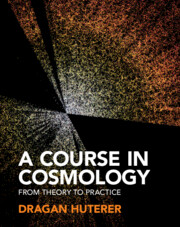Refine listing
Actions for selected content:
16950 results
6 - Schwarzschild’s Solution
-
- Book:
- A General Relativity Coursebook
- Published online:
- 03 May 2023
- Print publication:
- 06 April 2023, pp 100-130
-
- Chapter
- Export citation
Index
-
- Book:
- Stellar Structure and Evolution
- Published online:
- 02 May 2023
- Print publication:
- 06 April 2023, pp 320-324
-
- Chapter
- Export citation
11 - Pulsating Stars
-
- Book:
- Stellar Structure and Evolution
- Published online:
- 02 May 2023
- Print publication:
- 06 April 2023, pp 255-280
-
- Chapter
- Export citation
Dedication
-
- Book:
- Stellar Structure and Evolution
- Published online:
- 02 May 2023
- Print publication:
- 06 April 2023, pp v-vi
-
- Chapter
- Export citation
10 - Rotating Stars
-
- Book:
- Stellar Structure and Evolution
- Published online:
- 02 May 2023
- Print publication:
- 06 April 2023, pp 231-254
-
- Chapter
- Export citation
5 - Stars as Fusion Reactors
-
- Book:
- Stellar Structure and Evolution
- Published online:
- 02 May 2023
- Print publication:
- 06 April 2023, pp 89-116
-
- Chapter
- Export citation
12 - Binary Stars
-
- Book:
- Stellar Structure and Evolution
- Published online:
- 02 May 2023
- Print publication:
- 06 April 2023, pp 281-305
-
- Chapter
- Export citation
2 - Equations of Stellar Structure
-
- Book:
- Stellar Structure and Evolution
- Published online:
- 02 May 2023
- Print publication:
- 06 April 2023, pp 30-42
-
- Chapter
- Export citation
Preface
-
- Book:
- A General Relativity Coursebook
- Published online:
- 03 May 2023
- Print publication:
- 06 April 2023, pp xi-xii
-
- Chapter
- Export citation
5 - Einstein’s Equations
-
- Book:
- A General Relativity Coursebook
- Published online:
- 03 May 2023
- Print publication:
- 06 April 2023, pp 83-99
-
- Chapter
- Export citation
7 - Cosmology
-
- Book:
- A General Relativity Coursebook
- Published online:
- 03 May 2023
- Print publication:
- 06 April 2023, pp 131-150
-
- Chapter
- Export citation
Appendix A - Constants and Units
-
- Book:
- Stellar Structure and Evolution
- Published online:
- 02 May 2023
- Print publication:
- 06 April 2023, pp 306-307
-
- Chapter
- Export citation

A Course in Cosmology
- From Theory to Practice
-
- Published online:
- 31 March 2023
- Print publication:
- 09 March 2023
-
- Textbook
- Export citation
Problems
-
- Book:
- Supermassive Black Holes
- Published online:
- 23 March 2023
- Print publication:
- 30 March 2023, pp 289-298
-
- Chapter
- Export citation
4 - Disc Accretion on to Black Holes
-
- Book:
- Supermassive Black Holes
- Published online:
- 23 March 2023
- Print publication:
- 30 March 2023, pp 66-111
-
- Chapter
- Export citation
Index
-
- Book:
- Supermassive Black Holes
- Published online:
- 23 March 2023
- Print publication:
- 30 March 2023, pp 306-308
-
- Chapter
- Export citation
Dedication
-
- Book:
- Supermassive Black Holes
- Published online:
- 23 March 2023
- Print publication:
- 30 March 2023, pp v-vi
-
- Chapter
- Export citation
1 - Black Holes and Galaxies
-
- Book:
- Supermassive Black Holes
- Published online:
- 23 March 2023
- Print publication:
- 30 March 2023, pp 1-18
-
- Chapter
- Export citation
7 - SMBH Feedback in General
-
- Book:
- Supermassive Black Holes
- Published online:
- 23 March 2023
- Print publication:
- 30 March 2023, pp 248-272
-
- Chapter
- Export citation
References
-
- Book:
- Supermassive Black Holes
- Published online:
- 23 March 2023
- Print publication:
- 30 March 2023, pp 299-305
-
- Chapter
- Export citation
